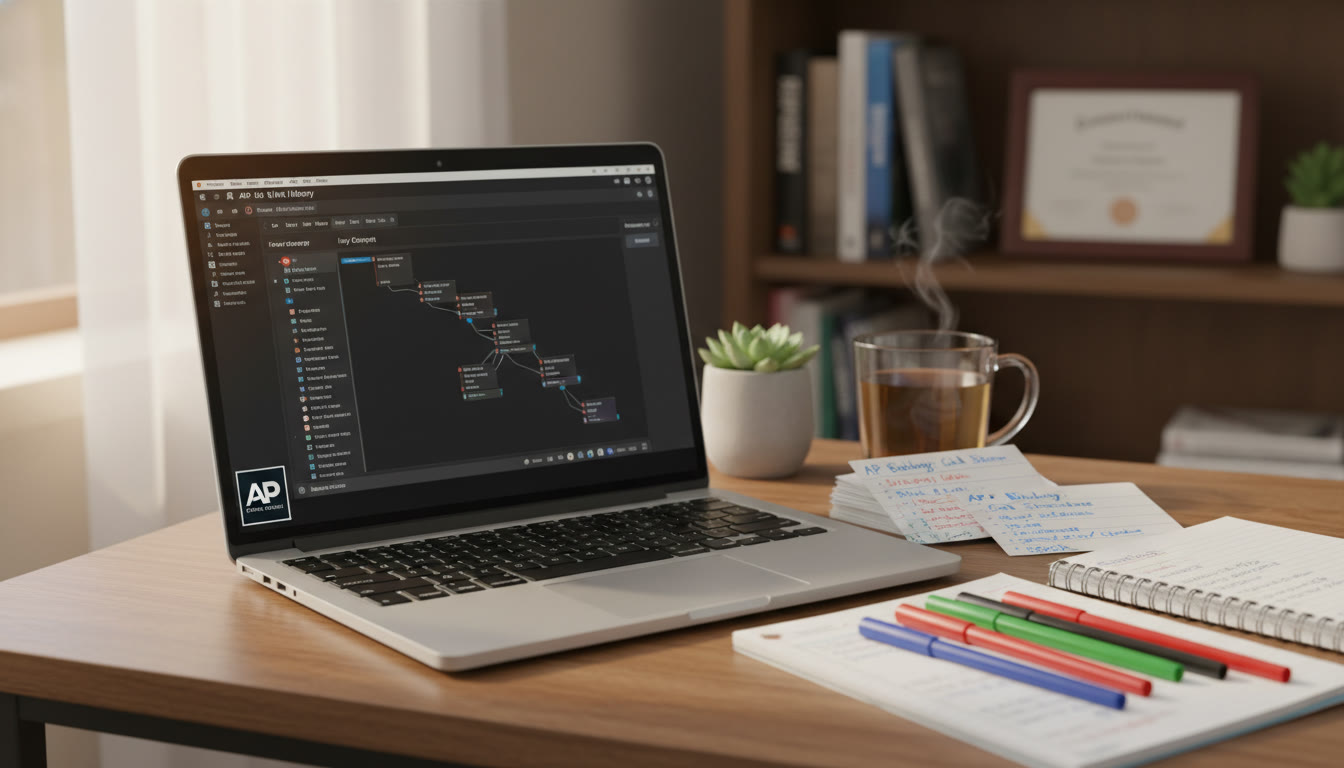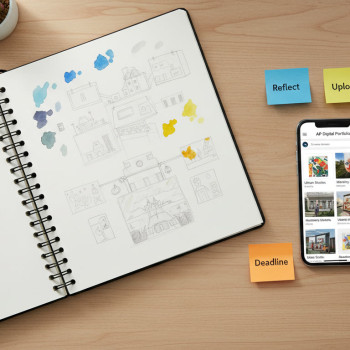Why Notes Matter for AP Success
Ask any top-performing AP student what helped them most, and many will point to the same thing: notes that are alive, not just archived. When you’re studying for AP Calculus, AP Biology, AP US History, or any other AP exam, it’s not enough to highlight a textbook. You need a system that turns fleeting understanding into durable knowledge you can deploy on test day.
This is where Obsidian, a local-first note-taking app, pairs brilliantly with the Zettelkasten method, a note system designed to cultivate connections and thinking. Together they create an active, personal knowledge base that helps you recall, apply, and synthesize AP-level concepts—exactly the cognitive skills AP exams demand.
What You’ll Get from This Guide
- Clear explanation of the Zettelkasten principles and why they work for AP study.
- Practical Obsidian workflows and templates tailored to AP subjects.
- Examples and step-by-step routines you can start using today—no fluff.
- A sample study plan and a small table of how to allocate note types across the AP syllabus.
- Tips for blending digital notes with active recall, spaced repetition, and 1-on-1 tutoring like Sparkl’s personalized help.

Core Idea: Zettelkasten in One Paragraph
Zettelkasten (German for “slip box”) is a networked note system built on atomic notes: each note contains a single idea and connects to related notes through explicit links. Over time, those notes form a web of understanding. Instead of long, linear lecture notes, you end up with a dynamic map of concepts that helps you think and write faster—exactly what AP essays, free-response questions, and interdisciplinary problem solving require.
Why This Beats Traditional Notebooks for APs
- Atomic notes force clarity: one idea per note means you won’t confuse terms or mix concepts.
- Connections are explicit: linking reveals relationships between topics (e.g., Newton’s laws and energy conservation in Physics C).
- Searchable and reusable: Obsidian turns those atomic notes into a searchable knowledge base you can reuse across multiple AP courses or years.
- Active retrieval is natural: use links and tags to build flashcard-style prompts or practice problems.
Obsidian: The Practical Container
Obsidian stores plain-text Markdown files in folders on your computer. That local-first approach makes it fast, private, and future-proof. For AP students, Obsidian’s core strengths are backlinks, graph view, and plugin support. But you don’t need every plugin—focus on a few that support spaced repetition, templates, and backlinks, and you’ll have a study system that grows with you.
Minimum Setup for AP Students
- Create a vault for each academic year or use one vault with subject folders.
- Install a templates plugin (for consistent note structure), a daily notes plugin (for study logs), and a backlinks panel (to see where your note fits).
- Optionally add a spaced-repetition plugin if you prefer integrated flashcards.
Types of Notes You Should Keep
Not every note has the same purpose. Organizing by note type makes review efficient and reduces cognitive load when you search for something later.
- Literature Notes — short captures from readings or lecture slides (source + 1–2 bullet ideas).
- Permanent Notes — atomic notes that express one idea in your own words; link them widely.
- Project Notes — AP essay outlines, lab plans, or long-term revision projects (e.g., FRQ practice schedule).
- Daily/Session Notes — quick logs of what you studied and what you struggled with.
- Practice Notes — solved problems, step-by-step reasoning, or past AP question breakdowns.
How to Make an Ideal Permanent Note
- Title: short and specific (e.g., “Conservation of Energy in Pendulums”).
- Claim: one-sentence statement of the idea.
- Explanation: 2–4 sentences in your own words, with a simple example or equation.
- Connections: link to 3–5 related notes (concepts, formulas, historical context).
- Use Case: how this appears in AP-style questions or experiments.
Sample Workflow: From Lecture to Long-Term Memory
Here’s a repeatable routine to turn a lecture or chapter into connected knowledge.
- During class: take concise literature notes (bullets, questions, key formulas).
- Right after class (same day): convert literature notes into permanent notes—one idea per note.
- Link new permanent notes to existing ones and add tags for subject and topic (e.g., #AP_Calculus, #integration).
- Create one or two practice notes that mirror AP question formats using the new content.
- Schedule spaced reviews using a daily study log or spaced-repetition plugin.
Example: AP Biology — Cellular Respiration
Lecture bullets: glycolysis steps, ATP yield, location in cytoplasm; inputs and outputs of Krebs cycle; oxidative phosphorylation and proton gradient.
Permanent notes you’d make:
- “Glycolysis: Net ATP and NADH” — explanation + worked example of ATP accounting.
- “Role of Mitochondrial Membrane in OxPhos” — explains proton motive force and link to membrane structure note.
- “Comparing Aerobic vs Anaerobic ATP Yields” — table comparing yields and contexts (muscle fatigue, fermentation).
Templates That Save Time
Using templates ensures you capture the right fields every time. Here are three compact templates tailored for AP work. You can implement these with Obsidian’s Templates plugin.
Permanent Note Template
- Title: [Concept]
- Claim: [One-sentence claim]
- Explanation: [2–4 sentences]
- Example: [Short worked example]
- Links: [[Related Concept 1]], [[Related Concept 2]]
- AP Use: [How it might appear on an AP question]
- Tags: #Subject #Topic
Practice Note Template
- Question: [AP-style prompt]
- Approach: [Key steps]
- Solution: [Complete solution]
- Common Mistakes: [What students trip over]
- Links: [[Concept Note]]
A Table to Help You Plan Note Allocation Across an AP Course
Use this simple table to decide how many of each note type you should aim for across a unit. Adjust numbers based on unit size and how concept-heavy the subject is.
| Unit Type | Lecture/Lab Count | Target Permanent Notes | Practice Notes | Weekly Review Time |
|---|---|---|---|---|
| Concept-Heavy (e.g., AP Physics) | 6–10 | 20–40 | 10–15 | 60–90 min |
| Content-Heavy (e.g., APUSH) | 8–12 | 25–50 | 6–12 (Document-Based) | 75–120 min |
| Lab/Skill-Based (e.g., AP Chem/ Bio labs) | 4–8 | 15–30 | 12–20 (procedural + data analysis) | 60–100 min |
Practice, Feedback, and Growth: Where Sparkl Fits
No system is self-sufficient. Turning notes into exam-readiness requires disciplined practice and targeted feedback. That’s where Sparkl’s personalized tutoring can amplify your effort: a tutor can review your note links, check for conceptual gaps, convert weak notes into stronger permanent notes, and create AP-style practice questions tailored to your mistakes. The combination of an organized Obsidian Zettelkasten plus 1-on-1 guidance accelerates improvement far faster than either approach alone.
How a Tutor Works With Your Vault
- Spot-checks for missing connections between concepts that often appear together on exams.
- Helps craft practice notes that mirror College Board question framing.
- Builds a weekly plan that integrates notes, problem sets, and review sessions with spaced repetition.
Turning Notes into AP-Style Answers
AP exams test application and synthesis. Your Zettelkasten makes synthesis easier because related notes are already connected. When you tackle a practice FRQ or DBQ, open a few linked notes and quickly assemble evidence, reasoning, and counterpoints.
Answer-Building Routine (10 minutes per question)
- Open the prompt, highlight the command verbs (compare, evaluate, explain).
- Search your vault for relevant permanent notes and practice notes.
- Create a short outline using linked notes as evidence bullets.
- Write the answer, then add a practice note with your solution and common mistakes.
- Flag areas where you lacked a direct link—create new permanent notes to fill the gap.
Active Recall and Spaced Repetition with Obsidian
To move content from short-term to exam-ready recall, pair your Zettelkasten with active recall. Turn permanent notes into question prompts or use a spaced-repetition plugin to test yourself on the concepts you most often forget.
Simple Prompting Strategy
- Create a “Question” heading in key permanent notes: “What are the assumptions behind X?”
- Keep answers short—two to four lines. If a note takes more, split it.
- Review those prompts at scheduled intervals: 1 day, 3 days, 7 days, 14 days, 30 days.
Common Pitfalls and How to Avoid Them
- Over-Collecting: Too many literature notes that never become permanent notes. Fix: Process same-day or within 48 hours.
- Weak Links: Vague links that don’t explain the relationship. Fix: write one-line rationale for each backlink.
- No Practice: Notes that never meet an exam-style question. Fix: convert a fraction of notes weekly into practice notes and timed drills.
- Plugin Overload: Too many bells and whistles slow you down. Fix: start minimal—templates, backlinks, and daily notes are enough.
Real Students, Real Examples
Imagine Ana, taking AP Chemistry. She made permanent notes for each reaction type and linked them to lab procedure notes. When facing a titration FRQ, she opened a cluster of linked notes and assembled a clear, evidence-backed answer within 15 minutes—time she then used to check calculations. Or Marcus, in APUSH, who tagged every primary-source practice note with thematic tags like #causes_of_reconstruction — months later, he used those exact tags to build DBQ evidence quickly.
How to Measure Progress
- Track how many permanent notes you convert per week.
- Monitor accuracy on practice questions linked to specific notes.
- Use the graph view: look for clusters growing in the right topics—those mean conceptual depth.
Putting It All Together: A 6-Week Mini Plan (for one AP unit)
This is a compact plan you can adapt. Each week mixes note creation, practice, review, and tutor feedback.
- Week 1: Attend lectures, collect literature notes, create permanent notes for fundamental concepts.
- Week 2: Convert advanced lecture points into permanent notes and make 4 practice notes. Review daily logs.
- Week 3: Focused spaced-repetition reviews; schedule a Sparkl tutoring session to audit your vault and practice FRQs.
- Week 4: Timed practice exams, build practice notes for most-missed questions, refine links.
- Week 5: Deep connections week—force cross-topic links (e.g., link thermodynamics notes to kinetic theory).
- Week 6: Final review—summarize unit in 10–15 high-quality permanent notes and do 2 full-length practice sections.
Final Tips: Simplicity, Consistency, and Curiosity
Two truths about excellent notes: they’re simple enough to trust during a review, and they’re consistent enough that you don’t waste time deciding where to put new information. Zettelkasten helps with both by enforcing short, linked notes. Make linking a habit: spend five minutes at the end of each study session connecting new notes to older ones.
And remember curiosity. The best vaults are driven by questions—what happens if you change a variable? Why does a source interpret an event this way? Those questions lead to the permanent notes that later become the muscle memory of exam answers.

Parting Thought: Notes as a Lifelong Asset
Your AP years are busy, but the notes you build don’t expire. A thoughtfully constructed Obsidian Zettelkasten becomes a study scaffold for college courses, capstones, and even career learning. Start with small, consistent steps: process today’s lecture, write one permanent note, link it twice. Over weeks and months, those small steps compound into clarity, confidence, and measurable AP improvement.
If you want help turning your vault into an exam-winning toolset, consider pairing your note routine with personalized tutoring. Tutors can help identify gaps, suggest better linkages, and design practice that targets your weaknesses—so your Obsidian vault becomes not just a repository, but a launchpad for AP success.
Ready to Start?
Open Obsidian, create a single permanent note for a concept you struggled with this week, and link it to two related ideas. That simple act starts a chain reaction. In a month, you’ll notice the difference: faster recall, clearer essays, and more confidence on test day.
Good luck—your notes are waiting to become the map of everything you’ve learned.




















No Comments
Leave a comment Cancel